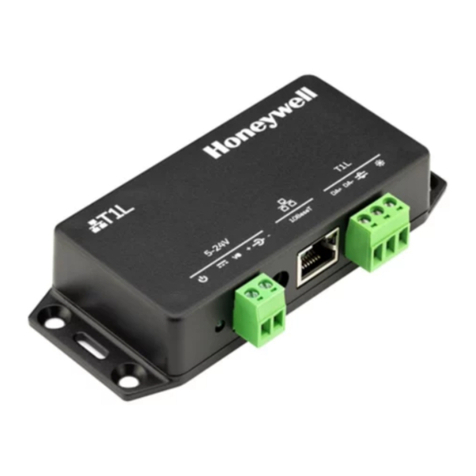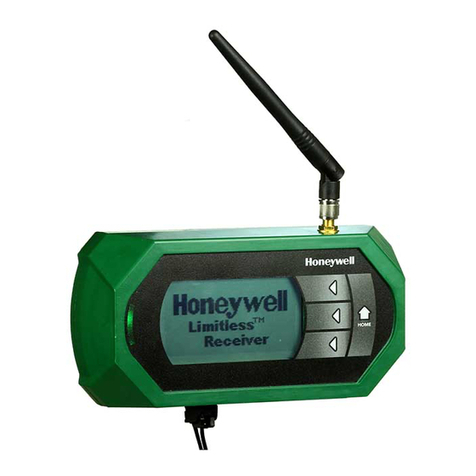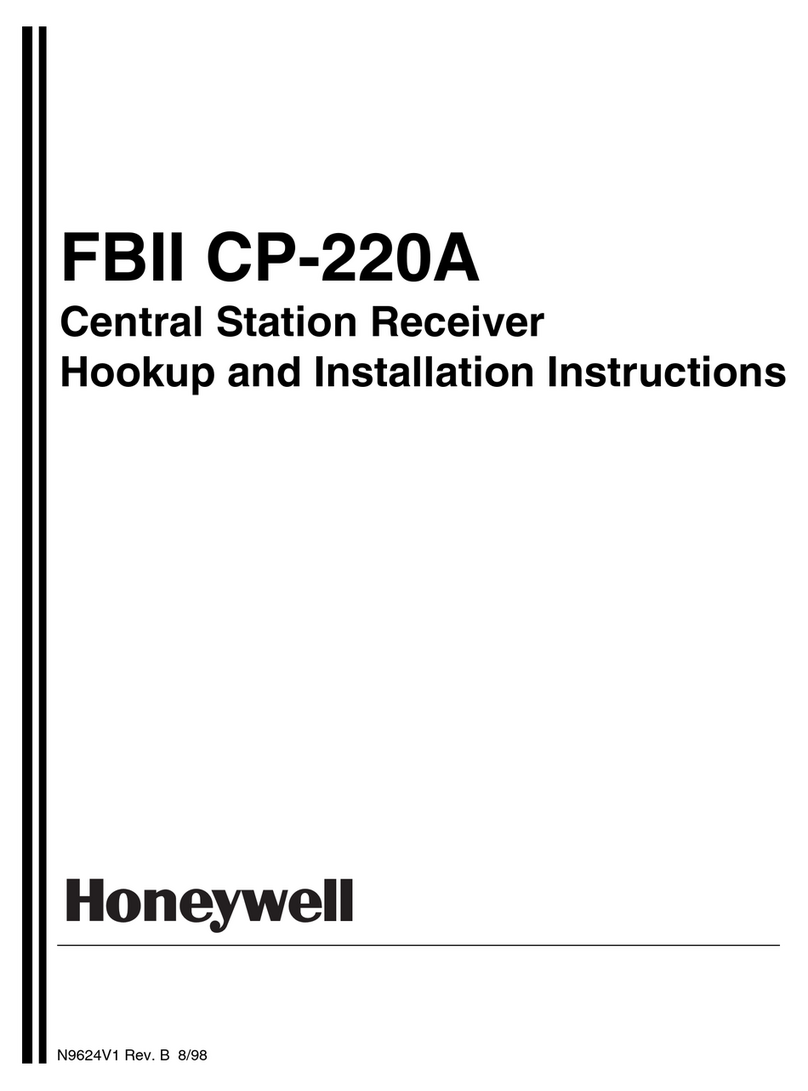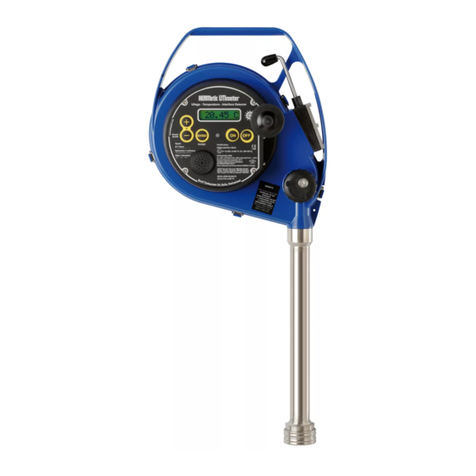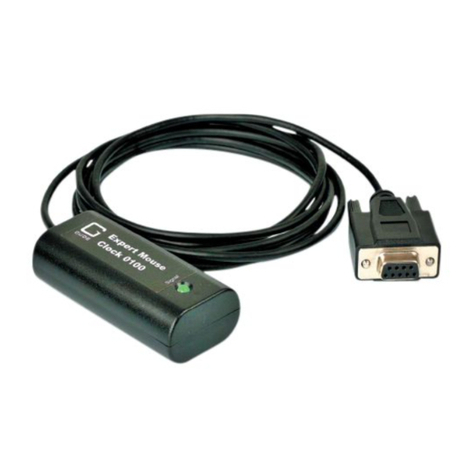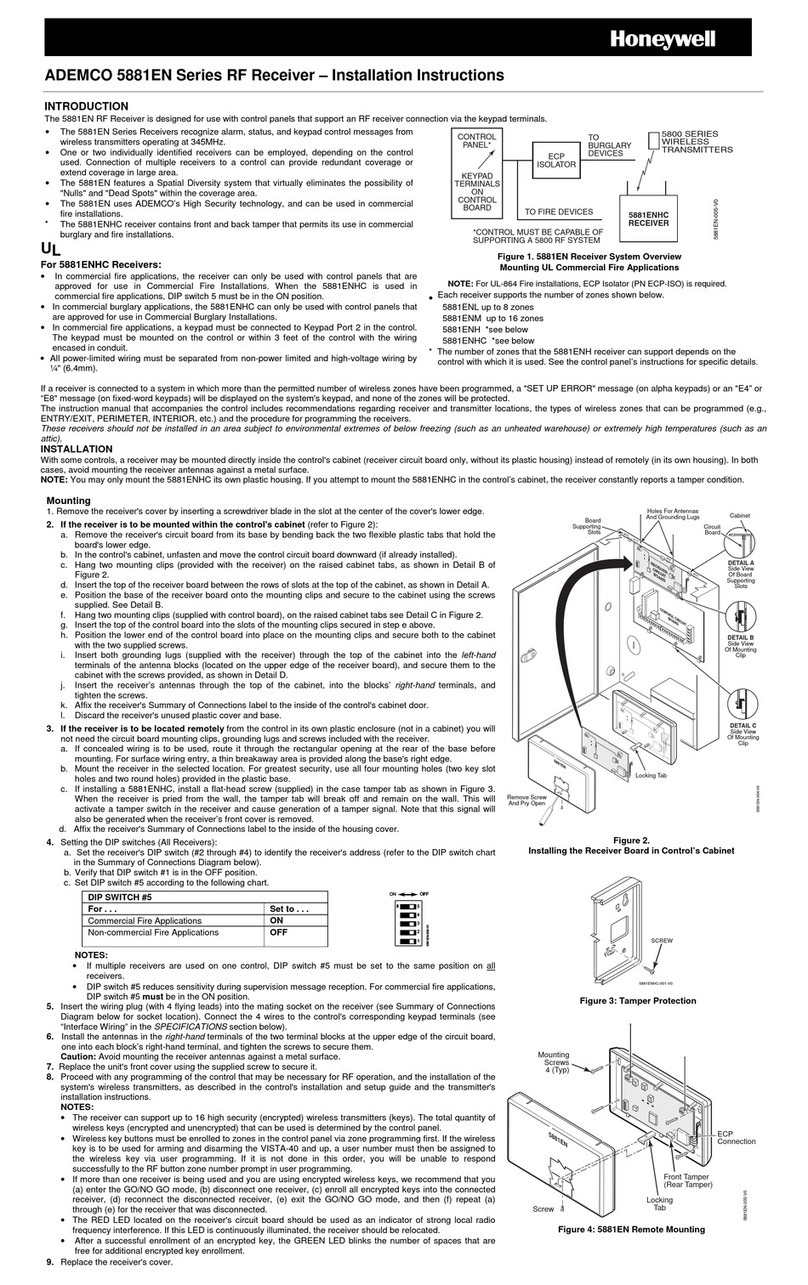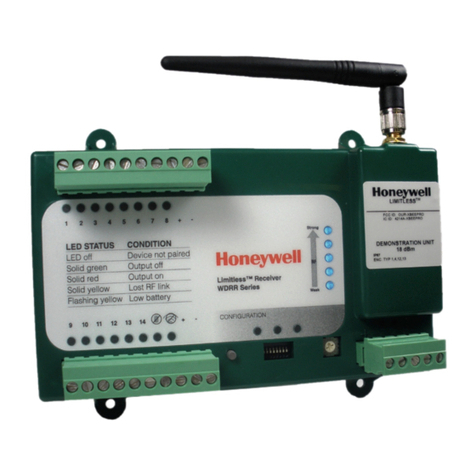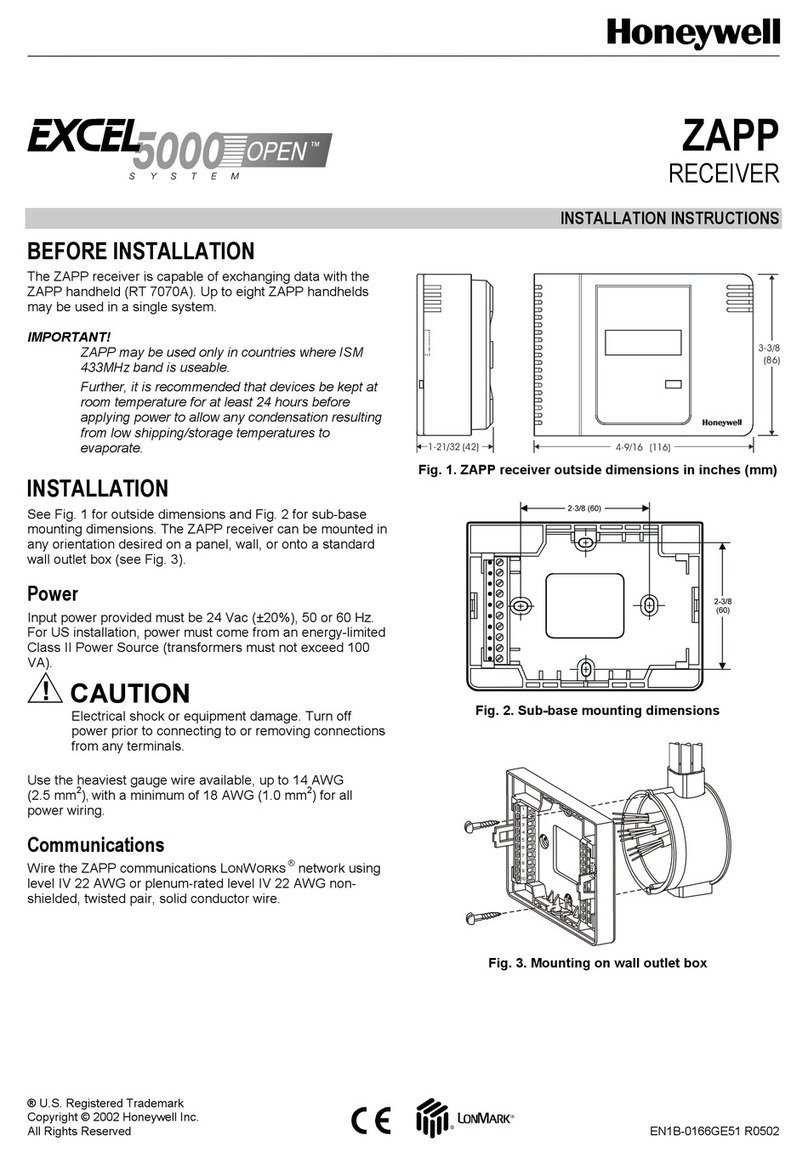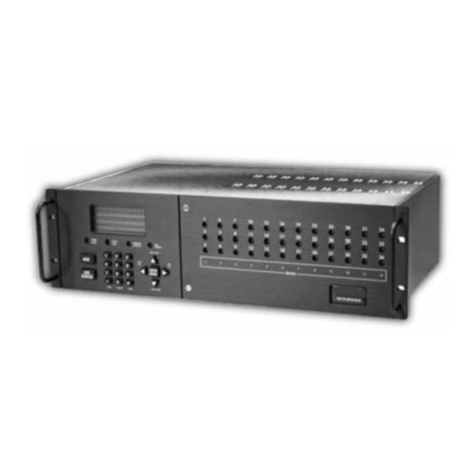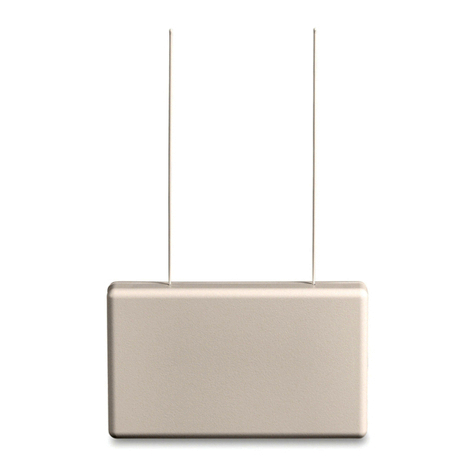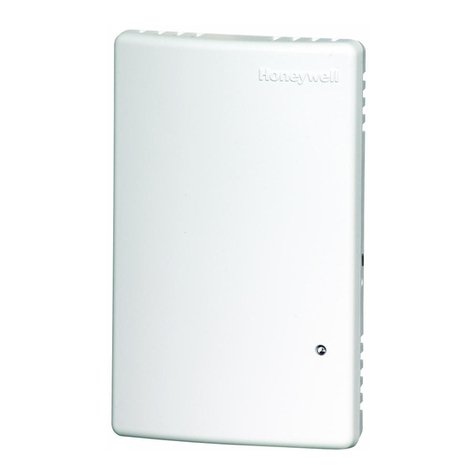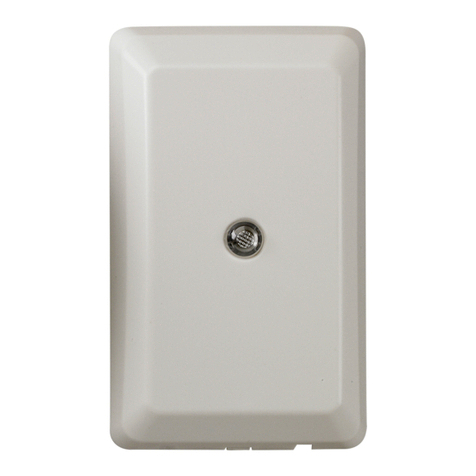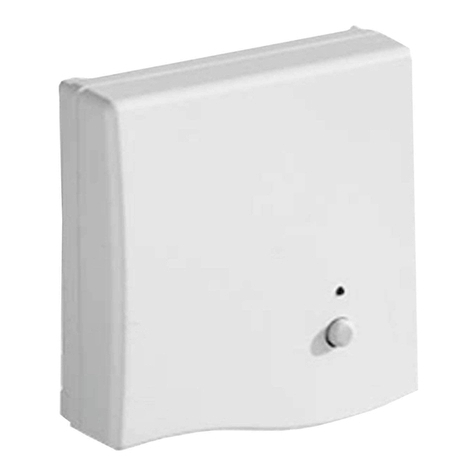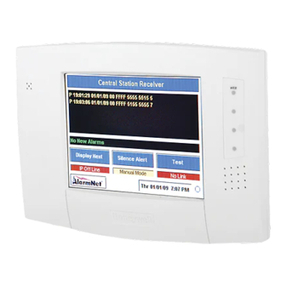
RV8310D,E MILLIVOLT RECEIVER/ MODULATING GAS VALVE
66-1106—2 2
WARNING
Electrical Shock or Equipment Damage
Hazard.
Can cause severe injury or death, or short
equipment circuitry.
Disconnect all power supplies before installation.
IMPORTANT
These gas valves are shipped with protective
seals over the inlet and outlet tappings. Do not
remove the seals until ready to connect the
piping.
Follow the appliance manufacturer instructions, if
available; otherwise, use these instructions.
Location
Locate the combination gas valve where it cannot be
affected by steam cleaning, high humidity, dripping water,
corrosive chemicals, dust or grease accumulation or
excessive heat. To assure proper operation, follow these
guidelines:
• Locate gas valve in a well-ventilated area.
• Mount gas valve high enough to avoid exposure to
flooding or splashing water.
• Make sure the ambient temperature does not exceed
the ambient temperature ratings for each component.
• Cover gas valve if appliance is cleaned with water,
steam, or chemicals or to avoid dust and grease
accumulation.
• Avoid locating gas valve where it can be exposed to
corrosive chemical fumes or dripping water.
Install Piping to Gas Valve
All piping must comply with local codes and ordinances
or with the National Fuel Gas code (ANSI Z223.1
NFPA No. 54), whichever applies. Tubing installation
must comply with approved standards and practices.
1. Use new, properly reamed pipe free from chips.
When tubing is used, assure the ends are square,
deburred and clean. All tubing bends must be
smooth and without deformation.
2. Run pipe or tubing to the valve. If tubing is used,
obtain a tube-to-pipe coupling to connect the
tubing to the valve.
3. Install sediment trap in the supply line to the gas
valve. See Fig. 1.
Install Valve
1. Mount valve 0 to 90 degrees, in any direction—
including vertically—from the upright position of the
gas control knob.
2. Mount the valve so gas flow is in the direction of
the arrow on the side of the valve.
3. If new pipe thread is needed, cut threads 9/16
on pipe.
4. Thread pipe into the valve. Do not insert deeper
than 3/8 in. Valve distortion or malfunction can
result if the pipe is inserted too deeply.
5. Apply a moderate amount of good quality pipe
compound (do not use Teflon tape) to pipe only,
leaving two end threads bare. On LP installations,
use compound resistant to LP gas. See Fig. 2.
6. Remove seals over valve inlet and outlet, if
necesary.
7. Connect pipe to valve inlet and outlet. Use wrench
on either side of the pipe outlet. Refer to
Fig. 3 through 5.
Fig. 1. Sediment trap installation.
Fig. 2. Use moderate amount of pipe compound.
GAS
CONTROL
GAS
CONTROL
HORIZONTAL
DROP
PIPED
GAS
SUPPLY
PIPED
GAS
SUPPLY
3 INCHES
(76 MM)
MINIMUM
3 INCHES
(76 MM)
MINIMUM
RISER
GAS
CONTROL
TUBING
GAS
SUPPLY
HORIZONTAL
DROP
3 INCHES
(76 MM)
MINIMUM
RISER
M4603
1
1
CAUTION
GAS LEAKAGE HAZARD.
FAILURE TO FOLLOW PRECAUTIONS CAN
RESULT IN A GAS-FILLED WORK AREA.
SHUT OFF THE MAIN GAS SUPPLY BEFORE REMOVING END CAP.
TEST FOR GAS LEAKAGE WHEN INSTALLATION IS COMPLETE.
ALL BENDS IN METALLIC TUBING SHOULD BE SMOOTH.
TWO IMPERFECT
THREADS GAS CONTROL
THREAD PIPE ACCORDING TO
INSTALLATION PROCEDURE FOR
INSERTION INTO GAS CONTROL.
APPLY A MODERATE AMOUNT OF
PIPE COMPOUND TO PIPE ONLY
(LEAVE TWO END THREADS BARE).
M6913
PIPE

